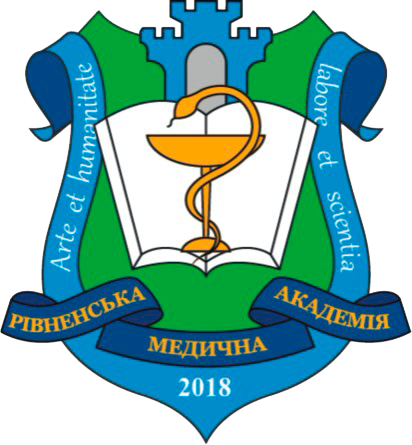STUDY OF THE EFFECTIVENESS OF REHABILITATION INTERVENTION FOR THE CORRECTION OF SIGNS OF DISORDER OF CHEWING FUNCTION IN OLDER AGE GROUP PERSONS WITH THE LOWER JAW FRACTURE
DOI:
https://doi.org/10.32782/health-2024.2.22Keywords:
bone fracture, jaw, gerontology and geriatrics, rehabilitation in stomatology, physical therapy.Abstract
Purpose: to investigate the dynamics of masticatory function indicators as criteria for the effectiveness of rehabilitation intervention aimed at correcting the consequences of the lower jaw fractures in patients of older age groups. Methods. 42 elderly and senile people took part in the research process. Group 1 consisted of 23 individuals whose history was not burdened by a fracture of the bones of the facial skull. Group 2 included 19 people with the consequences of the lower jaw fractures. A physical therapy program was developed for them, aimed at correcting the signs of deterioration of chewing function lasting 1 month. It included active and passive techniques to mobilize the lower jaw and improve masticatory function. The effectiveness of the program was evaluated by the amplitude of movements of the lower jaw, pain intensity, manual muscle testing, and the Jaw Functional Limitation Scale questionnaire. The results. In elderly and senile patients with the consequences of a the lower jaw fractures, a violation of the masticatory function is determined, which is characterized by pain, limitation of the opening of the mouth, a decrease in the strength of the masticatory muscles (according to MMT), deterioration of chewing, mobility of the lower jaw, verbal and emotional communication (according to Jaw Functional Limitation Scale). The amount of mouth opening in individuals of group 2 under the influence of rehabilitation increased from 2.83 ± 0.11 cm to 3.67 ± 0.15 cm, the lateral deviation increased from 0.10 ± 0.02 cm to 0.21 cm (p < 0.05 relative to the initial level). The intensity of the pain syndrome decreased, the pain during exercise was 1.42 ± 0.04 VAS points, which testified to the formation of a strong bone callus. The strength of the masticatory muscles of group 2 individuals increased to 2.75 ± 0.05 points, temporal muscles – to 2.64 ± 0.06 points, lateral pterygoid muscles – to 2.55 ± 0.06 points, medial pterygoid muscles – to 2, 43 ± 0.05 points (р < 0.05 relative to the original result). Repeated results of JFLS showed improvement of chewing function up to 36.17 ± 2.11 points, mandibular mobility – up to 28.42 ± 1.45 points, verbal and emotional communication – up to 85.13 ± 2.13 points, total score – up to 149.72 ± 2.12 (p < 0.05 compared to the original data). Conclusions. The developed complex rehabilitation program demonstrated a statistically significant effect (p < 0.05) on the studied indicators of masticatory function, which confirms the need for the use of specialized rehabilitation in patients of older age groups with injuries of the lower jaw for a long time.
References
Adik K., Lamb P., Moran M., Childs D., Francis A., Vinyard C.J. Trends in mandibular fractures in the USA: A 20-year retrospective analysis. Dent Traumatol. 2023. № 39 (5). Р. 425–436. DOI: 10.1111/edt.12857
Boffano P., Roccia F., Zavattero E., et al. European Maxillofacial Trauma (EURMAT) project: a multicentre and prospective study. J Craniomaxillofac Surg. 2015. № 43 (1). Р. 62–70. DOI: 10.1016/j.jcms.2014.10.011
Саєнко О. В., Аравіцька М. Г. Оцінювання ефективності програми реабілітації хворих із дисфункцією скронево-нижньощелепного суглоба у постіммобілізаційному періоді після переломів нижньої щелепи за показниками кінезіофобії та якості життя. Health & Education. 2023. № 4. С. 220–225. DOI: https://doi.org/10.32782/health-2023.4.31.
Bera R.N., Tiwari P. Current Evidence for the Management of Edentulous Atrophic Mandible Fractures: A PRISMASWiM Guided Review. Craniomaxillofac Trauma Reconstr. 2023. № 16 (4). Р. 317–332. DOI: 10.1177/19433875221115585.
Grygus I., Kostyshyn A., Ilnytska O., Ornat H. The condition of the masticatory muscle group in the treatment of patients with reduced occlusion height. Health Prob Civil. 2022. № 16 (2). Р. 164–172. https://doi.org/10.5114/hpc.2022.115000.
Kannari L., Marttila E., Oksa M., Furuholm J., Snäll J. Non-Surgical Site-Related Complications in Mandibular Fracture Surgery – A Problem of Elderly Patients? J Oral Maxillofac Surg. 2024. № 82 (1). Р. 47–55. DOI: 10.1016/j.joms.2023.10.004.
Kannari L., Marttila E, Thorén H., Toivari M., Snäll J. Mandibular fractures in aged patients – Challenges in diagnosis. Dent Traumatol. 2022. № 38 (6). Р. 487–494. DOI: 10.1111/edt.12778.
Kim T.G., Chung K.J., Lee J.H., Kim Y.H., Lee J.H. Clinical Outcomes Between Atrophic and Nonatrophic Mandibular Fracture in Elderly Patients. J Craniofac Surg. 2018. № 29 (8). Р. e815–e818. DOI: 10.1097/SCS.0000000000004863.
Petronis Z, Spaicyte N, Sakalys D, Januzis G. Functional Rehabilitation after Mandibular Fracture – A Systematic Review. Ann Maxillofac Surg. 2022. № 12 (2). Р. 197–202. DOI: 10.4103/ams.ams_99_22.
Аравіцька М. Г., Шеремета Л. М., Данильченко С. І., Довгань О. В. Ефективність засобів фізичної терапії у корекції функціонального статусу скронево-нижньощелепного суглоба при артрозі. Український журнал медицини, біології та спорту. 2021. № 6 (34). С. 188–193. DOI: 10.26693/jmbs06.06.188.
Azam I., Chahal A., Kapoor G., et al. Effects of a program consisting of strain/counterstrain technique, phonophoresis, heat therapy, and stretching in patients with temporomandibular joint dysfunction: A pilot study. Medicine (Baltimore). 2023. № 102 (32). Р. e34569. DOI: 10.1097/MD.0000000000034569.
Стандарт медичної допомоги. Невогнепальні переломи нижньої щелепи (виросткового відростка, гілки, кута, тіла та симфізу) [web source]. Retrieved from: https://www.dec.gov.ua/wp-content/uploads/2023/06/1096_16062023_smd.pdf.
Травми щелепно-лицевої ділянки. Клінічна настанова, заснована на доказах [web source]. Retrieved from: https://www.dec.gov.ua/wp-content/uploads/2023/02/2023_kn_travma.pdf.
Hislop H., Avers D., Brown, M. Daniels and Worthingham’s Muscle Testing: Techniques of Manual Examination: Principles of Manual Muscle Testing. Elsevier Health Sciences, Amsterdam, 2013.
Ohrbach R., Larsson P., List T. The jaw functional limitation scale: development, reliability, and validity of 8-item and 20-item versions. J Orofac Pain. 2008. № 22 (3). Р. 219–230.





